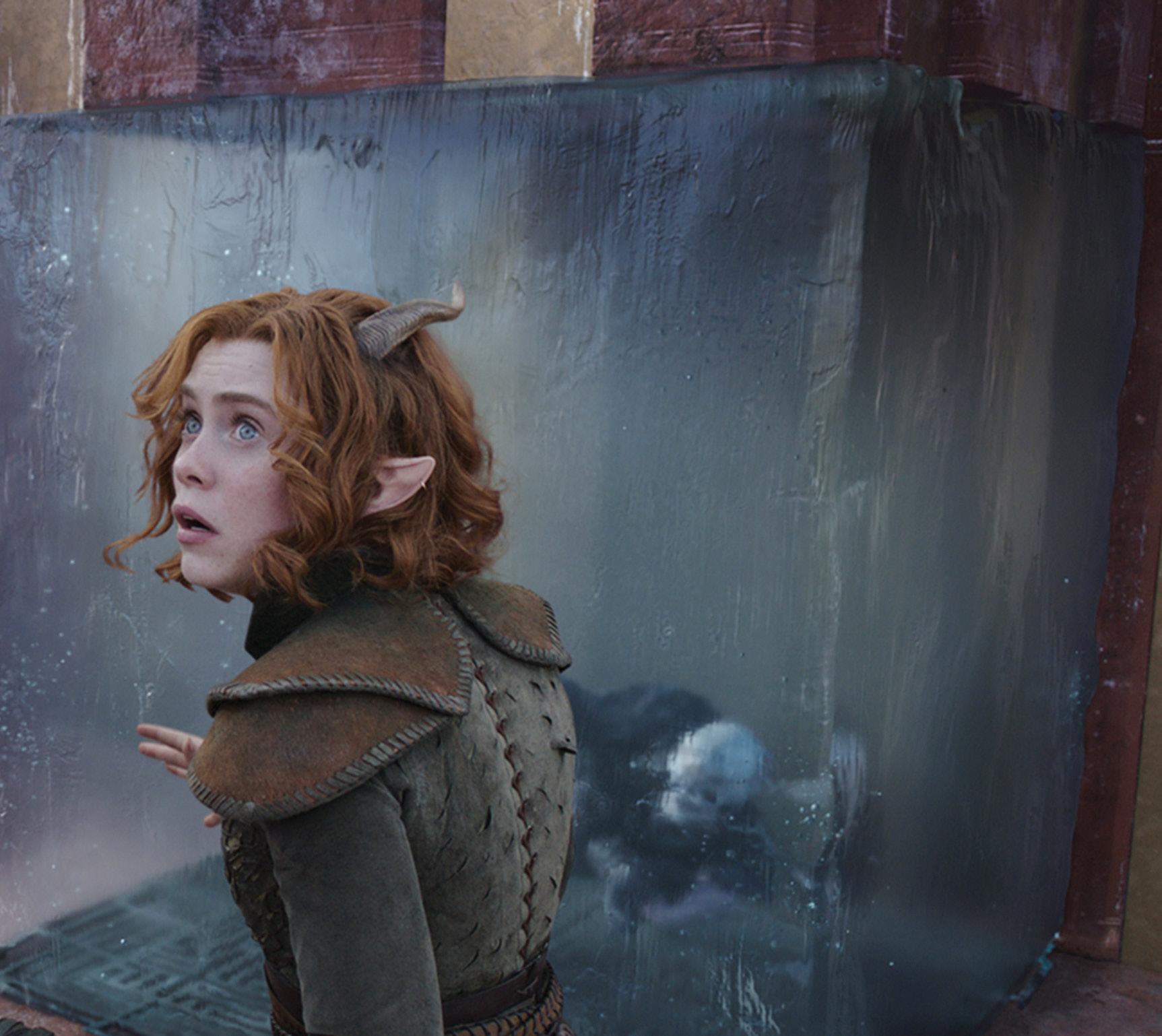
2 minute read
NOBODY’S EVER SEEN ANYTHING QUITE LIKE THIS BEFORE ON FILM.
to reflect that and act as a means of storytelling in itself. Actors were fitted with full-body makeup and corpse costumes, with additional animatronic and digital pieces added on for effect. Every inch of the corpses was meticulously designed to a level most viewers probably won’t expect.
“Each of the corpses’ deaths had to correspond to how they talk about the past, so that had to be implemented into their look, whether they were burned alive by a dragon or cut by an axe. There was extensive interface with the Irish and English costume departments because there are flashback moments where the corpses are alive. So whatever costumes they were wearing when they were alive, we had to recreate 100-year-old, 500-year-old, decomposed versions of those costumes. It was very difficult and time-consuming, but it was satisfying and a lot of fun.”
‡ JARNATHAN
The team at Legacy Effects has worked on some of the most spectacular puppets and animatronics put to screen, from Iron Man’s suit to the bear in The Revenant, to Grogu on The Mandalorian. But with Dungeons & Dragons: Honor Among Thieves, the studio pushed themselves to experiment with something that they’d never tried.
Chancellor Jarnathan, played by Clayton Grover, is an aarakocra — a bird-like humanoid with a giant wingspan and a particularly menacing, beaked visage. While there are a few shots of Jarnathan in flight that are done digitally, most of his scenes were done in-camera, with practical effects. Legacy Effects built a massive animatronic costume to bring him to life, requiring multiple puppeteers to operate. It’s unlike anything the team has made before.
“It’s a constant animatronic costume,” Mahan explains. “It’s a very complicated piece of costuming, and it’s a big leap forward in what we’ve been experimenting with on other shows. It has activated 13-foot wingspan wings that actually work on Clayton’s body, and then an animatronic talking head and extension feet. He’s [about] nine feet tall… absolutely huge.”
The benefit of having Jarnathan and many of the other characters in the movie represented physically, with practical effects, is two-fold. For interior, close-up shots, seeing a real, tangible creature moving in-camera makes the character far more convincing to the audience’s eye than a fully synthesized image.
Additionally, having a physical model on set gives the actors something tangible to react to, which pays dividends in their performances.
“I think, especially when you have comedic moments in these types of films, having a physical piece there, having the actor and the puppeteers there, they can ad-lib,” MacGowan says. “You get something that you just wouldn't get if there wasn’t a physical piece there. So I think, in this case, it really helped bring out a lot of comedy in the film.”
‡ MAGIC
One of the key elements of any D&D game is magic, so ILM essentially had no choice but to nail the magic effects for fear of enraging legions of fans. The team’s approach to magic in the film was to make the spells look more organic and textured than your typical fantasy CGI fairy dust light show.

“The aesthetic of the movie is extremely grounded,” Vaziri says. “Grounded and plausible and real and touchable. How do you do that with magical spells?”
Directors John Francis Daley and Jonathan Goldstein shot the film in a way that feels gritty and physical, using as many practical effects, sets, and locations as possible. The film’s heroes trudge through the elements and get their hands dirty, so the artists at ILM made an effort to reflect that tactility and realism in their magic effects, lending the action a deeper sense of danger.
“Every single time we had something physical generated from a character’s hands, we thought, what is the physical metaphor here?” Vaziri recalls. “If they’re generating a fireball, we need to make it feel like there was a fireball on set. If another spell is, say, affecting water to generate a giant wave, well, when somebody’s moving their hands around, what comes off of them? How about super-fine mist? Maybe you’ll see droplets… maybe you’ll see that it’s emanating from their hands. We wanted to make it feel like the actors had something in front of them. That’s where we want to be.”





